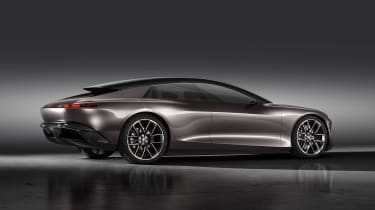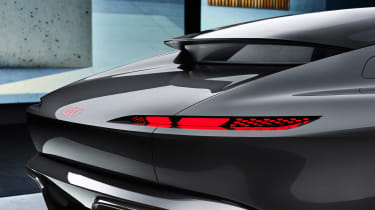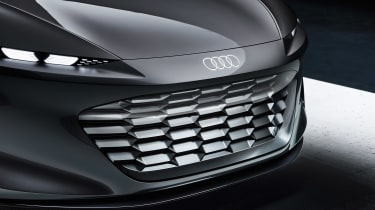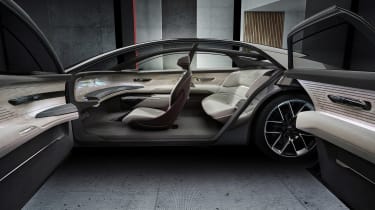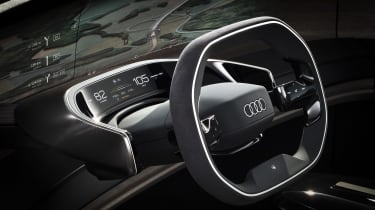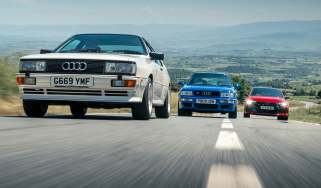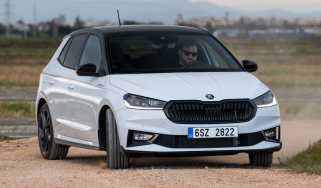Audi Grand Sphere Concept previews new flagship EV to succeed A8
The second of three Audi Concepts, Grand Sphere aims for new type of luxury class customer
Audi has revealed the second of three new concepts it plans to show in 2021, with this Grand Sphere due to make its debut at next week’s Munich IAA motor show. The sleek, four-door saloon-cum-coupe joins the Sky Sphere previously seen at Pebble Beach, but in this case will directly inform a new flagship model that Audi is readying for launch in the next two to three years.
The job of realising a new flagship saloon for any premium player is a tricky thing in 2021, as while it historically should be a platform for pioneering new technologies and forward-thinking design, its form and customer base are typically the most conservative in the business. Audi’s decision to reimagine that form is driven by appealing to a new type of customer.
> Audi to end combustion engine production by 2033
So while the Grand Sphere’s production-friendly spin-off will form a flagship for the brand, it won’t directly replace the A8. Instead it will take a different approach by leveraging its proposed autonomy to make this less about sitting in the back and more about being an expression of high-end personal transport with the owner in the driver’s seat, whether they’re actually driving or not.
Design
As a result, the Grand Sphere’s form is nothing like the traditional three-box saloon we expect of German flagships, instead forming a much sleeker and streamlined aesthetic that Audi is quickly associating itself with. Its proportions, facilitated by the adoption of its PPE platform, are not typical of modern EVs, and differ from the norm of the short overhangs and cab-forward design language being employed on other high-end EVs such as the Mercedes EQS and Lucid Air. Instead, the Grand Sphere has elongated extremities with tapered bodywork and an extremely raked windscreen angle.
The bonnet is longer than those of the Grand Sphere’s two potential rivals, and references a more traditional notion of luxury, and while the lines and surfaces aren’t immediately recognisable as ‘Audi’, the volume along the car’s flanks is dominated by strong haunches over the wheels and a strong C-pillar, which do remain an Audi signature.
The Grand Sphere then adopts an unusual vertical rear screen that nestles between the completely glazed roof and buttress-like C-pillars. This mimics the silhouette of a luxury fastback, yet is constructed from an altogether more interesting intersection of both material and shape. When queried about whether this sort of construction might conceivably reach production, Audi’s designers insist that this revolutionary body architecture is in development to reach production, and that despite the obvious challenges will form the foundation of Audi’s lofty aspirations with its flagship electric cars, suggesting it’ll be less about mechanical engineering and more about high-end design and construction.
The typical Audi grille has been reimagined as a graphic with slim headlights above featuring a new lighting signature designed from the conjoined rings of the Audi badge. We expect this new graphic will be found on future Audi models as all brands grapple with the challenge of creating visual distinction in a sea of daytime running lights and illuminated grilles.
Powertrain and chassis
The Grand Sphere Concept is, typically, electrically motivated and comes with a built-in autonomous capability, both of which will feature on the future production model, although Audi projects that the more substantial level 4 autonomy won’t be in use until later this decade.
Its production-ready realisation will run on Audi’s new PPE platform that’s been co-developed with Porsche to serve C to E segment models in a similar way to what MLB-Evo does for its combustion models. This Grand Sphere will be its apex model, though, and as such features a 120kWh battery pack (the same size as in Merc’s new EQS) and two electric motors that produce a combined total output of 710bhp and 708lb ft of torque.
The two driven axles make the Grand Sphere all-wheel drive, yet the system has been balanced between offering range and performance, rather than all-out speed as in the RS e-tron GT. Zero to 62mph is quoted at just over four seconds, while top speed will be limited to preserve overall range.
That range is quoted at 466 miles for this concept, which will set a target for the production model. The Grand Sphere shares its 800V electrical system and 270kW peak charging capability with the e-tron GT, and will be capable of providing a theoretical 186 miles of range in just ten minutes.
Interior
This is where the Grand Sphere diverges from what we can expect to see in the production model, as it doesn’t so much have an interior as an open space that’s largely free of any control interfaces and a dashboard. The bulkhead itself is used as a projection surface, with the interaction handled by gesture control.
It’s the Grand Sphere’s autonomous capability that drives such an interior design, but with level 4 autonomy not due to arrive until well after the production derivative’s release in a few years’ time, production models will almost definitely adopt a more relatable interior layout, inclusive of a steering wheel.
The concept still has a small steering wheel and information display that reveal themselves when self-drive mode is selected, but the interior’s design philosophy is cognisant of the more aspirational technologies in use within the Grand Sphere.


